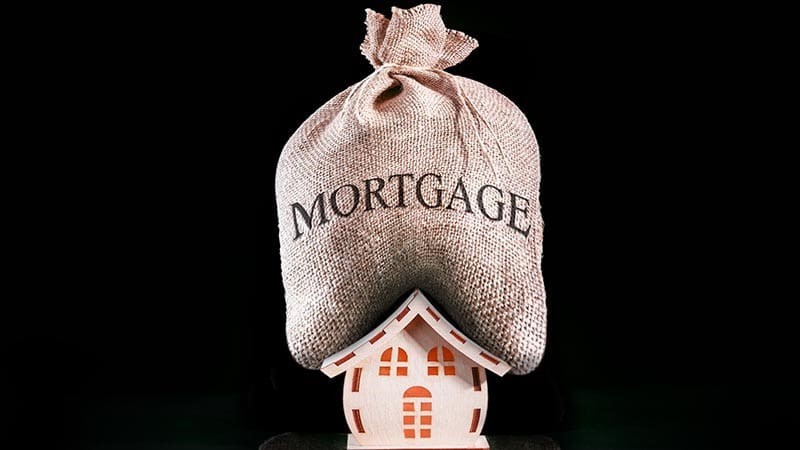- 10 Feb 2025
- By API Magazine

With more than 1.5 million mortgage holders deemed ‘at risk’ of failing to meet their mortgage repayments, having financial coping mechanisms to implement can make a massive difference for borrowers.
Mortgage stress is affecting a large number of Australian homeowners, with more than 1.5 million borrowers now classified as ‘at risk’. This occurs when mortgage repayments exceed 30 per cent of gross household income, placing pressure on household budgets and reducing financial flexibility.
Although many homeowners continue to meet their repayments, rising interest rates and cost-of-living pressures are forcing them to cut back on essential expenses or dip into savings. With the Reserve Bank of Australia (RBA) holding interest rates at a 13-year high, financial strain remains a key concern in the housing market.
Importantly, being in mortgage stress doesn’t necessarily mean a borrower has missed a payment. Many still meet their obligations but must make financial sacrifices to do so.
Mortgage delinquency, on the other hand, occurs when a borrower fails to make their mortgage repayments on time. If a mortgage remains unpaid for an extended period, it can lead to foreclosure, where the lender takes possession of the property. While mortgage stress can be a warning sign, not all stressed borrowers become delinquent.
According to Roy Morgan, 26.8 per cent of mortgage holders, approximately 1,514,000 Australians, were considered ‘at risk’ in November 2024. This marked a small increase from October but remained 3.5 per cent lower than June figures, thanks largely to the stage three tax cuts that boosted household incomes.
High interest rates continue to put pressure on homeowners, with the RBA – for now – maintaining the cash rate at a 13-year high of 4.35 per cent.
This has significantly increased mortgage repayments, particularly for borrowers on variable rates. Some of the larger banks have started adjusting both their variable and fixed home loan rates in anticipation of an interest rate adjustment by the RBA late on 18 February.
If the RBA lowers interest rates by 0.25 per cent to 4.10 per cent in February, the number of mortgage holders ‘at risk’ is projected to fall by 26,000 to 1,488,000 (26.3 per cent), bringing much needed relief to many homeowners, especially for those investors who have large mortgages relative to their income.
Stagnant wage growth has also played a role, with many households struggling to keep up with the rising cost of living. When expenses outpace income growth, mortgage stress becomes more widespread.
What should property investors do?
For property investors, the situation presents both risks and opportunities.
Higher investment loan repayments can strain cash flow, particularly in geographical markets where property values have stabilised and rental yields have potentially stagnated.
Investors should regularly assess and track all income and expenses and identify potential savings. Reducing discretionary spending and prioritising essential costs can provide some breathing room.
As lenders pre-emptively adjust mortgage rates in anticipation of a potential interest rate adjustment in February, negotiating with your lender becomes a critical step. Refinancing can help secure a lower rate, while fixed-rate mortgage options offer stability in a high-rate environment. Additionally, offset accounts and redraw facilities can be leveraged to reduce interest payments and improve cash flow.
According to the recently released API Magazine Property Sentiment Report Q4 2024, of the 78 per cent of respondents who identified as a landlord, only 21 per cent said they would be willing to lose a good tenant to pursue higher rental returns. But increasing rental income where market conditions allow can help boost cash flow, while diversifying into short-term rentals can also create new income opportunities.

Source: Finder
For investors with underperforming properties, selling may be a strategic move to free up capital for reinvestment in higher-performing markets, like commercial property.
One often-overlooked way to ease mortgage stress on an investment property, is by maximising tax depreciation benefits. Investors can claim depreciation on their investment properties, reducing their taxable income and ultimately increasing cash flow.
CoreLogic data shows Australian home values remained steady in January.
The Domain property group forecasts national house prices to rise by 4 per cent to per cent in 2025 and KPMG predicts a 3.3 per cent increase over the next 12 months, indicating that despite the challenges, the Australian housing market remains a viable investment space if strategic investment decisions are made.
While mortgage stress remains a persistent concern, having a reliable team of property experts, including financial advisers, mortgage brokers and tax depreciation specialists can help property investors take strategic steps to manage their financial position effectively and avoid mortgage stress, while optimising their tax deductions, maximising cash flow and retaining their property assets.
Article Q&A
How many mortgage holders are considered ‘at risk’. or under mortgage stress?
According to Roy Morgan, 26.8 per cent of mortgage holders, approximately 1,514,000 Australians, were considered ‘at risk’ in November 2024. This marked a small increase from October but remained 3.5 per cent lower than June figures, thanks largely to the stage three tax cuts that boosted household incomes.
Will interest rate cuts reduce mortgage stress?
If the RBA lowers interest rates by 0.25 per cent to 4.10 per cent in February, the number of mortgage holders ‘at risk’ is projected to fall by 26,000 to 1,488,000 (to 26.3 per cent from 26.8 per cent).
How can borrowers overcome mortgage stress?
Investors should regularly assess and track all income and expenses and identify potential savings. Reducing discretionary spending and prioritising essential costs can provide some breathing room. As lenders pre-emptively adjust mortgage rates in anticipation of a potential interest rate adjustment in February, negotiating with your lender becomes a critical step. Refinancing can help secure a lower rate, while fixed-rate mortgage options offer stability in a high-rate environment. Additionally, offset accounts and redraw facilities can be leveraged to reduce interest payments and improve cash flow.
